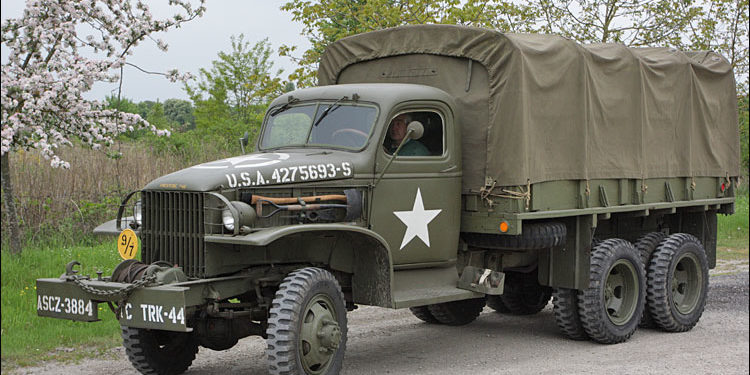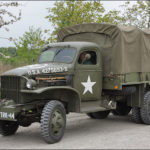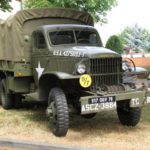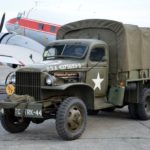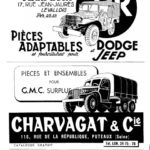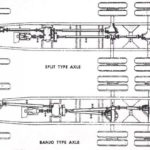History
With a total of 562 500 units produced, the GMC CCKW is the WWII emblematic light truck, released in numerous variants : cargo, gasoline tanker, water tanker, workshop, artillery tractor, compressor, tipper truck, amphibious truck etc… As steel was more heavily rationed during the course of the war, the steel cargo bed was replaced by a wooden one. Wooden beds proved unsatisfactory and a ‘composite’ bed with steel sides, framing, and wooden bottom slats was developed. For the same reason, many vehicles saw their original closed cabs abandoned in favor of open cabs with canvas top. They were called “torpedo”. They also offered a lower silhouette for shipment.
Our GMC cargo is nicknamed by the club members “caisse bois” which translates into “wooden bed” as it is its distinctive feature. It is a banjo axle model (Chevrolet) and is equipped with a winch.
Technical data
Maker: GMC
Designation: CCKW 353 B2
C: designed in 1941
C: conventional cab
K: all-wheel drive
W: dual rear axles
353: GMC type
B: banjo axle
2: with winch
Weight 8,800 lb (4,000 kg) empty 16,400 lb (7,400 kg) loaded Length 270 1⁄8 in (6.86 m) Width 88 in (2.24 m) Height 93 in (2.36 m) to cab 109 1⁄8 in (2.77 m) overall
Engine GMC 270 91 hp (68 kW)
Transmission 5 speed x 2 range transfer case
Suspension Beam axles on leaf springs
Fuel capacity 40 US gal (150 l) Operational range 300 mi (482.8 km) Speed 45 mph (72 km/h)
- Locomotion en Fête 2018 – GMC CCKW 353 cargo



